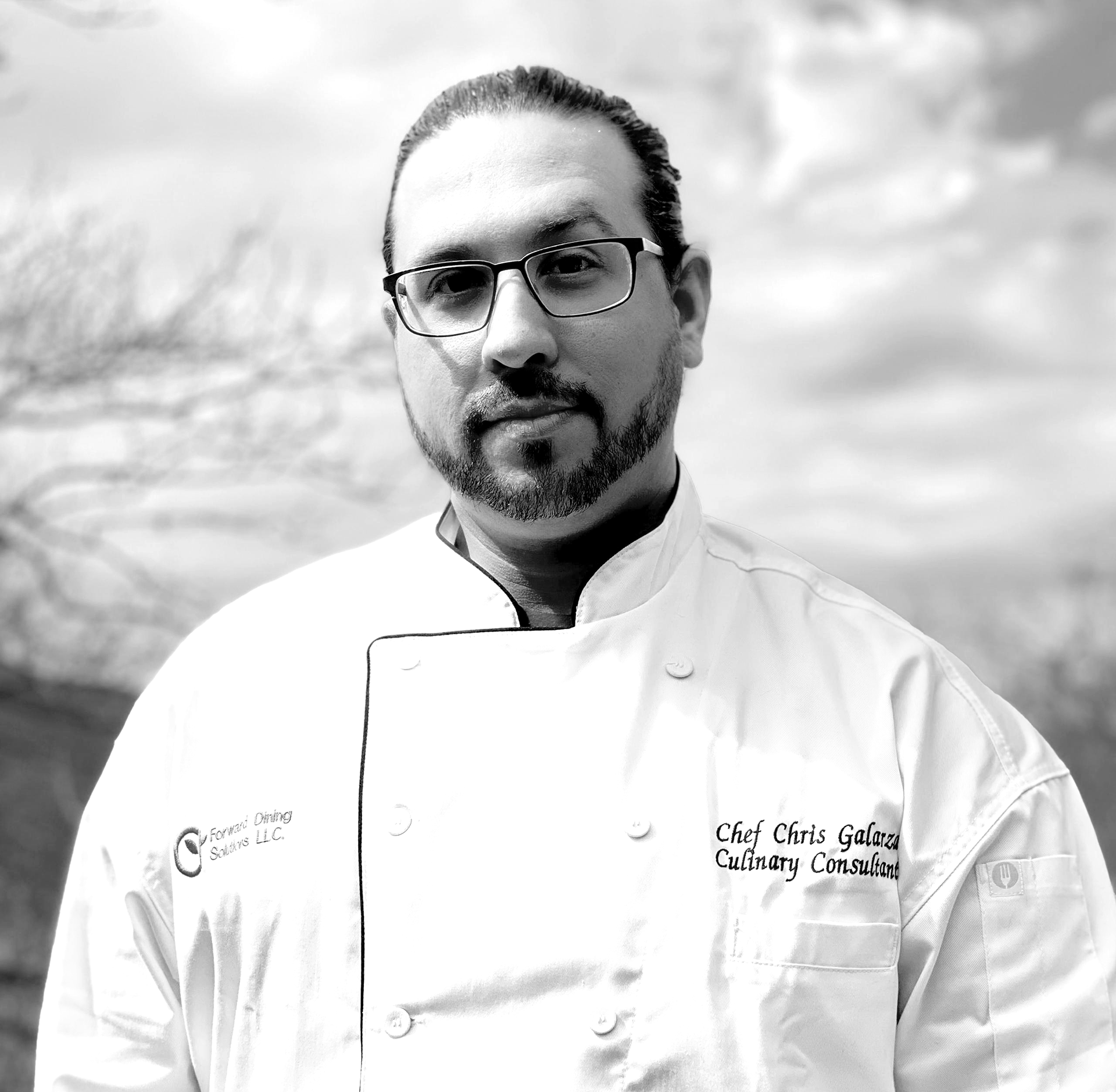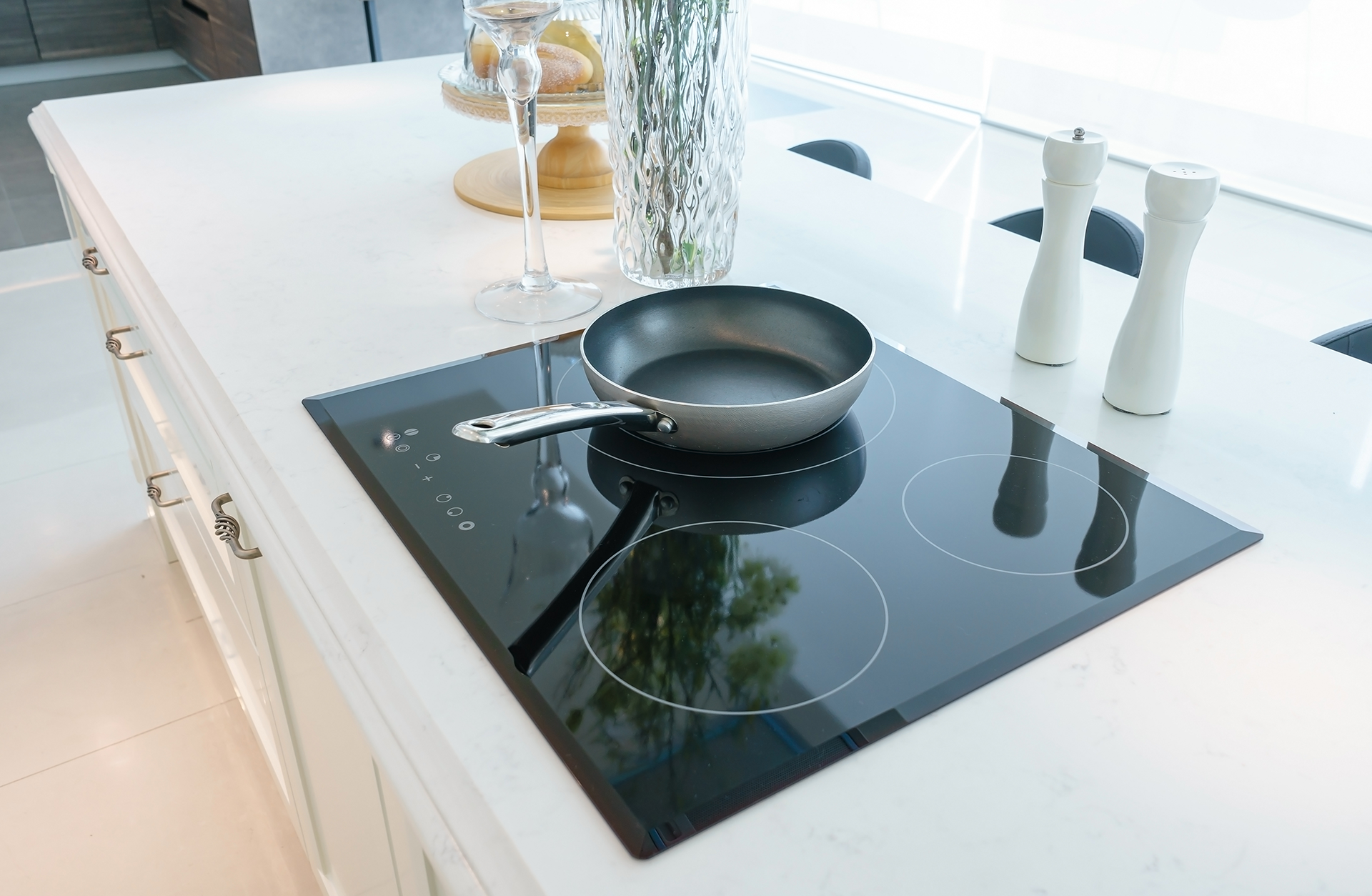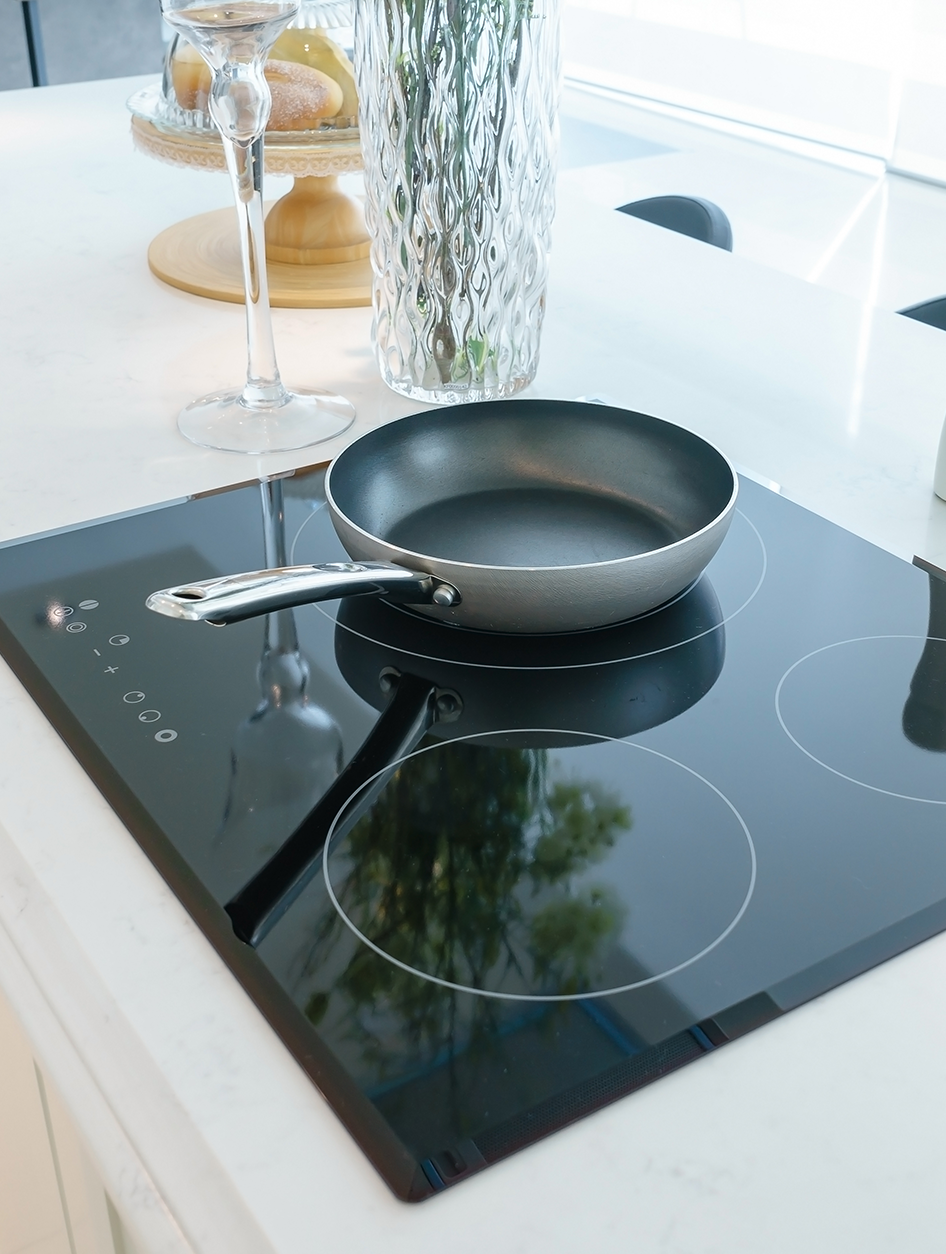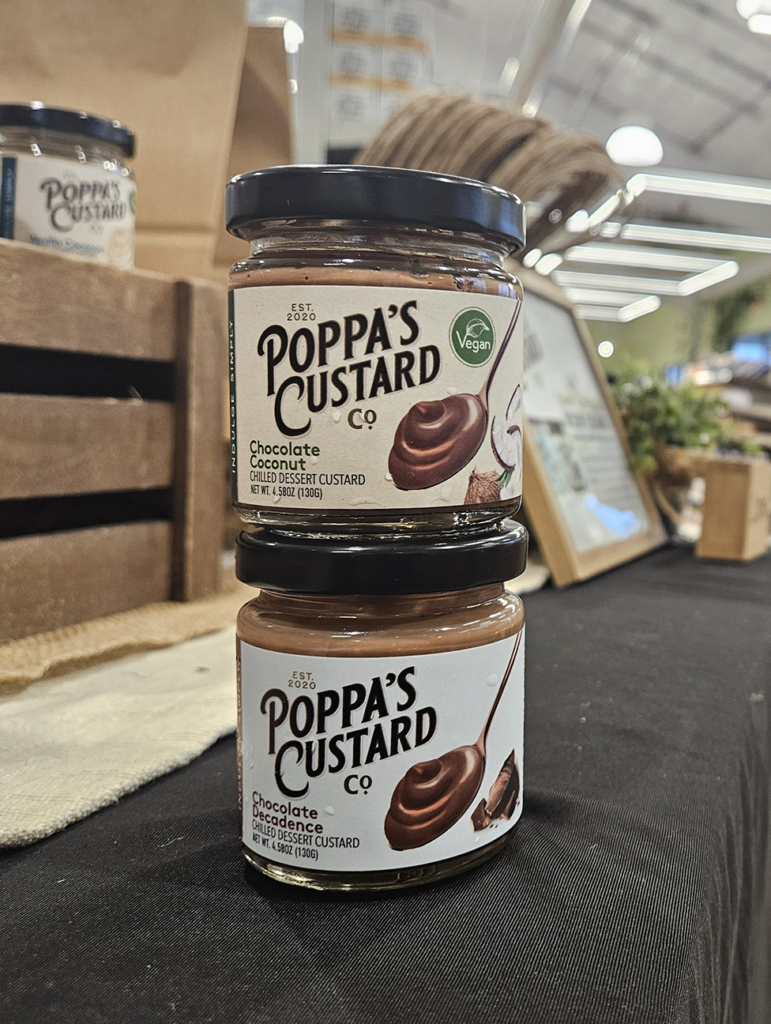In a scene from the PBS docuseries “NOVA: Chasing Carbon Zero,” Chef Chris Galarza removes an ice cold frying pan from a freezer and places it on an induction burner. Only a moment later, he tosses some chopped peppers in the pan, which immediately start to sizzle. This impossible-seeming trick is one that Galaraza has performed many times as one of electric kitchens’ most enthusiastic hype men.
Chef Galarza is an author, consultant and founder of Forward Dining Solutions LLC, a Pittsburgh-based firm that focuses exclusively on developing and implementing commercial electric kitchens. Galarza has consulted for companies like Microsoft, Google and the Rachel Carson EcoVillage, helping them undergo gas-to-electric conversions or all-electric build-outs. He notes that some of the most renowned restaurants in the world, like Noma in Denmark, are all-electric.
It was after experiencing the power and precision of induction cooking while working at Chatham University’s Eden Hall Campus that Galarza became a tireless proselytizer for the many benefits of electrified kitchens.
“With induction, you just operate much more efficiently: food is done faster, clean up is easier, you save money on cleaning chemicals and utilities,” he says. “For every dollar you spend on gas, you lose 75-90% of it due to inefficiency, like chefs keeping the burners on even with no food on them. If everyone electrified, you’d see restaurant profitability increase, allowing them to reinvest.”

According to the EPA-backed energy efficiency program Energy Star, induction cooking tops are about three times more efficient than gas; if all cooking tops sold in the U.S. in 2021 were induction burners, energy cost savings would add up to more than $125 million.
In addition to efficiency and cost-savings for commercial kitchens, electric cooking equipment is safer for workers. Because of the science behind induction (which creates molecular tension using electromagnetic currents), only the pan gets hot — not the handle or the air around it.
It also improves indoor air quality. The health risks and respiratory problems associated with exposure to emissions are well-documented; the EPA, American Lung Association and the Consumer Product Safety Commission have all released reports drawing damning connections between gas stoves and indoor air pollution. The emissions from gas stoves, like nitrogen dioxide and carbon monoxide, have been shown to cause or exacerbate respiratory problems. The health concerns related to gas emissions are even more heightened in commercial or restaurant settings where the stove and oven are constantly on. Even with hoods running, employees are exposed to those emissions for eight or more hours each day.
Then there are the environmental issues. Gas stoves and ovens burn methane gases, which produce carbon dioxide and contribute to climate change. Those emissions also cause smog and ground-level ozone. According to a study by Stanford University, methane leaking from stoves in U.S. kitchens has the same climate impact as about half a million gasoline-powered cars.
On the residential front, 3% of the stoves in home kitchens across the U.S. are induction — compared to 1% five years ago. According to a 2022 Consumer Reports survey, nearly 70% of respondents would consider purchasing an induction cooktop.
As more data from these studies has entered the public debate, there has been a growing level of concern that states will ban gas-powered cooking equipment in residential and commercial spaces (New York State has already banned gas stoves and furnaces in most new construction), with no small amount of outcry from some politicians and organizations, such as the National Restaurant Association, which published a white paper in 2022 vehemently defending the use of natural gas in commercial kitchens. But Galarza insists that chefs and line cooks need to educate themselves and reimagine the future of the kitchen with a greater focus on sustainability.
Despite increased attention on restaurants, kitchen culture and sustainability in recent years, the bones of how these spaces operate have largely stayed the same. “Not since [Auguste] Escoffier [an influential French chef] invented the brigade system in the early 1900s have we really thought about the kitchen,” Galarza notes.
In the face of pushback and skepticism, will commercial kitchens in Philly embrace the obvious benefits of electric and induction kitchens?
I used to feel like, ‘Why would you want to use anything but gas?’ but when I experienced induction, I couldn’t stop singing its praises.”
— Chef Chris Galarza, Forward Dining Solutions
Like so many business decisions, it will likely come down to finances. Electric kitchen equipment, specifically induction ranges, are dramatically more expensive than their gas counterparts.
“I can get a modern gas stove brand new for around $8,000. For electric, you’re talking $30K, and induction is even higher,” says Thomas Sheridan, owner of Kensington Food Company, a gourmet foods importer/wholesaler with a stall in Reading Terminal Market. Sheridan is currently building out a retail space and commissary kitchen on Kensington Avenue.
The newly appointed shared kitchen will feature electric fryers and proofing ovens, and one induction four-range stovetop. The rest of the equipment, including five other ranges, will be gas powered. In a perfect world, Sheridan says he would prefer an all-electric kitchen.
“My biggest reasons would be health and safety; if you move to induction, the gases are gone, and there’s a much cleaner environment,” he says. “But we don’t have a million dollars to spend.”
In October 2022 through December 2023, there was a pilot program administered by the Pennsylvania Department of Environmental Protection (DEP) that was meant to help offset some of those costs. The Cooking in Healthy Electrified Commercial Kitchens (CHECK) rebate program was launched to help schools, nonprofits and restaurants modernize their kitchens through energy efficiency and electrification.
The program came about after Heidi Kunsch, environmental group manager at the DEP, and Chef Galarza met at a green building conference in 2021. Kunsch was inspired by one of Galarza’s educational demonstrations about electric cooking equipment and soon after the two collaborated to launch CHECK, which was funded by the U.S. Department of Energy’s State Energy Program. With $150,000 of funding, CHECK provided rebates up to $8,500 to commercial kitchens that install electric equipment. (The program is currently closed to new applications.)
To apply for the rebate, an applicant had to first tune into a live or pre-recorded webinar, or attend an in-person workshop led by Chef Galarza. There were different webinars geared toward restaurants, K-12 schools, higher education institutions and nonprofits. While there are similar rebate programs in other states, CHECK is the only one with an educational component.

“We’ve experienced considerable success in the educational segment of the program, engaging with over 500 individuals through webinars and induction cooking workshops,” says Garrett Strunk, an Energy Program specialist with DEP. “As for rebate issuance, the program has seen ten projects completed, with five more in progress and seven applications currently under review, but the program’s future is dependent on federal funding and whether there is a demonstrated need for these rebates.”
A lot of the interest in CHECK so far has come from K-12 schools, including the Pennridge, Radnor Township and Avon Grove school districts. Swarthmore College and Delaware Park Casino in Delaware are two other institutions that have gone fully electric in their kitchens, though not through the CHECK program.
Chef Galarza encourages local restaurants who don’t have corporate or university-level budgets to consider starting with small equipment swaps. He also knows that there’s a stereotype that most chefs prefer cooking with gas, but believes that with continued education, the tide will turn.
“I used to feel like, ‘Why would you want to use anything but gas?’ but when I experienced induction, I couldn’t stop singing its praises,” he says. “We need more outreach, and once that happens, I think you’ll see more Philly-area chefs start to go for this in the next few years.”








